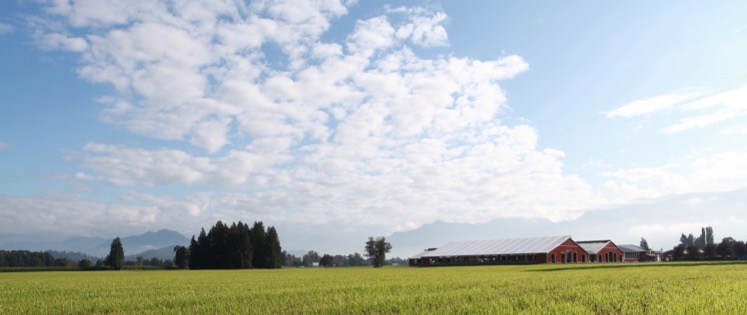Yogurt has been enjoyed by cultures around the world (pun intended) for thousands of years.
Whether you like it as a breakfast staple, a snack, a cooking substitution, or a foundation for tasty beverages, there are many ways to enjoy yogurt.
But where did it come from? Let’s explore this history of yogurt.
What is yogurt?
Yogurt is a dairy product created by the bacterial fermentation of milk or cream. It’s most commonly made from cow’s milk, but you can find yogurt made from the milk of other animals including goats, sheep, yaks, camels, and water buffalo.
To make yogurt, milk or cream is pasteurized and homogenized, then Lactobacillus delbrueckii subsp. bulgaricus and Streptococcus thermophiles bacteria are added to convert the lactose into lactic acid. This is what thickens it, and gives it the distinct tang.
The yogurt has been kept at specific temperatures throughout the process. After its final cooling, it can get delicious flavours added.
Yogurt vs. yoghurt.
Why is it sometimes spelled differently?
At some point you’ve probably learned the hard way from a spell checker that Canadian English includes a vast melting pot of words spelled the same as U.K. English and U.S. English. In the case of yogurt, it’s the American version; across North America it’s almost always spelled ‘yogurt’ (or ‘yogourt’ in Canadian French). But in the U.K., Australia, and New Zealand, it’s usually ‘yoghurt’.
In other countries you might see it spelled ‘yogourt’, ‘yoghourt’, or further variations. The name for this versatile product is believed to go way back to the Turkish word ‘yoğurmak’, which means to knead, thicken, coagulate, or curdle. And the root word ‘yog’ means ‘to intensify’–pretty fitting for the fermentation process!
Which country invented yogurt?
If you’ve been reading along so far, you’ve probably already guessed: yogurt comes from what is now Turkey. Read on for the rich history of yogurt!
Ancient and Medieval Times
Yogurt has ancient roots that go back millennia in Asia, Europe, and the Middle East.
Its first known appearance was during the Neolithic period (around 5,000 BC) in Mesopotamia. That makes yogurt well over 7,000 years old! It’s believed that, like butter, yogurt was created by accident when milk was exposed to bacteria or soured in warm temperatures.
Turkish texts from the 11th century (1100 BC to 1001 BC) mention yogurt being used by nomadic Turks.
Evidence from ancient pottery shows that Neolithic people were using pots to store milk. And as a fermented food, yogurt was a great way to preserve milk, since its natural acidity slows the growth of harmful bacteria.
Yogurt was also a well-known product in Ancient Greece. But despite the popularity of Greek yogurt today, the Greeks of that time saw ‘oxygala’ (οξύγαλα) as only fit for peasants–who consumed it with honey. Those peasants knew what they were doing.
A century later, yogurt and other fermented dairy products were important to Genghis Khan’s Mongolian army in the late 12th and early 13th centuries. Khan believed the extraordinary bravery of his warriors was thanks to regularly eating yogurt.
Indian texts place yogurt flavoured with cinnamon and mustard seed in the kitchen of Indian emperor Akbar I, who reigned from 1556 to 1605 BC. A rice wine yogurt treat called nailao (奶酪) has been around in China since at least the 1800s.
Yogurt and Longevity
Yogurt was catapulted into fame following a lecture given by Elie Metchnikoff in 1904 at the Pasteur Institute in Paris. Metchnikoff suggested that longevity among Bulgarians could be attributed to the beneficial lactobacilli bacteria in yogurt.
Yogurt became front-page news, and set off a yogurt craze that quickly spread to North America. Everybody had to have it! John Harvey Kellog (yes, that Kellog!) decided that the patients at his Battle Creek, MI, sanitarium would each get a pint of yogurt. Kellog believed that yogurt bacteria fought off disease.
Soon, yogurt could be bought at pharmacies. This was a full-circle journey from when it was prescribed to King François I of France (1542) as treatment for persistent digestive problems.
Popularity in North America
In 1919, a Greek emigrant to Spain named Isaac Carasso started a yogurt factory that later became the Danone company–named after his son, Daniel. In 1929 a Danone plant was opened in France. Daniel eventually took over the company and in 1942, and moved the company to New York.
Dannon (as the company was known at that time in the U.S.) boldly combined yogurt with jams, a move that intensified yogurt’s appeal.
Yogurt Today
Today, we have a rich variety of choices in the yogurt aisle. Canadians consume an annual average of 11.01 litres of yogurt per person! Here are more fun facts about modern yogurt:
- Yogurt is often well-tolerated by people with lactose intolerance since the bacteria in yogurt help with digesting lactose
- Yogurt is a calcium-rich food; ¾ cup of plain yogurt contains about 300 mg of calcium, while the same amount of flavoured yogurt contains about 200 mg
- It’s great in smoothies, overnight oats, and is the star ingredient in lassi
- Because of its acidity, yogurt blends well in sauces without curdling and is frequently used in Indian cuisine like chicken korma or shrimp and cauliflower curry
- French parents often introduce their children to cooking by making a yogurt cake
Yogurt is also regulated in most countries. All yogurt sold in Canada must legally contain Lactobacillus delbrueckii subsp. bulgaricus and Streptococcus thermophiles bacteria. It also must have at least 10 million bacteria per gram at the time it is marketed. Other bacteria may also be added (such as L.acidophilus-B.bifidum).
Which country eats the most yogurt?
Considering how much yogurt we collectively consume, it’s surprising how outdated the data is on global yogurt consumption! As of 2015, the top five countries that consume the most yogurt were:
- France
- Ireland
- Canada
- United Kingdom
- Australia
As of 2020, the countries producing and exporting the most yogurt were:
- Germany
- France
- Greece
- Austria
- Spain
Make your own yogurt.
If you want to shake things up, you can make your own yogurt at home with our recipe.
Pro tip: Try draining your yogurt to make your own yogurt cheese (labneh) that you can spread on bread or crackers. The measuring is really simple in this recipe—just use the cup that yogurt comes in as the measure!



